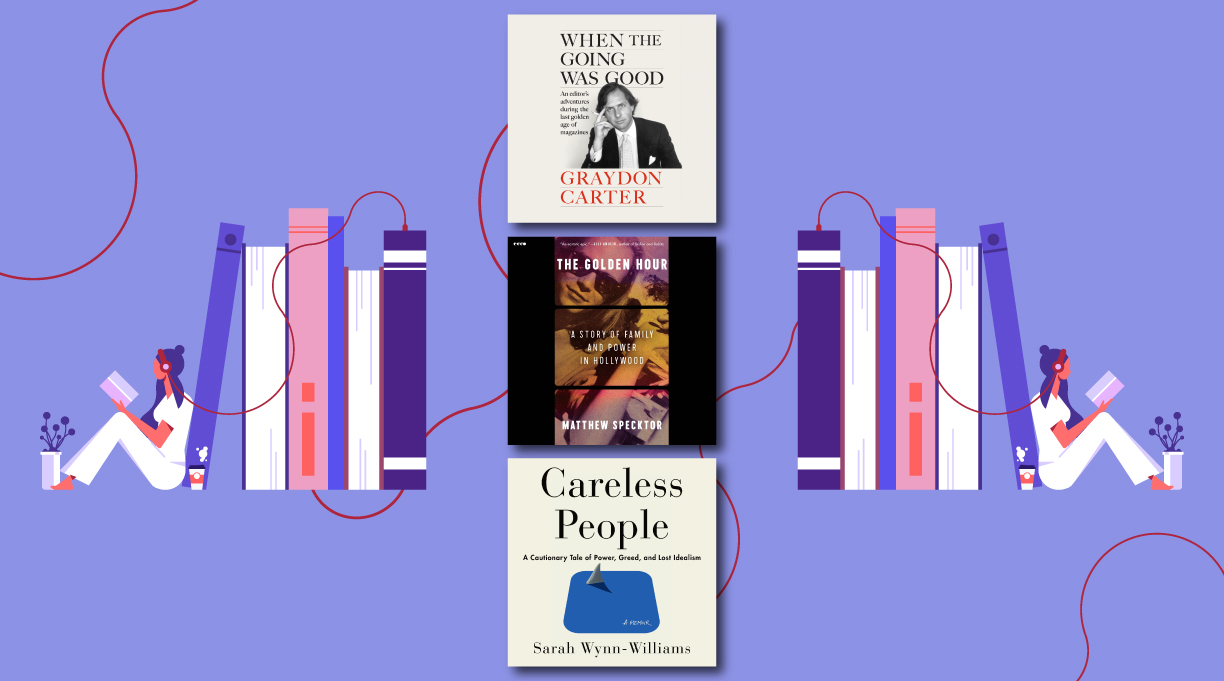For 25 years, Graydon Carter reigned over the media palace that he built at Vanity Fair magazine, as famous for its Oscar gala as for its Annie Leibovitz covers and juicy exposés. He begins When the Going Was Good: An Editor’s Adventures During the Last Golden Age of Magazines (Penguin Random House Audio, 12 hours and 30 minutes) with his rough-hewn Canadian roots: hockey, wood chopping, and workin’ on the railroad. This was the Kirkus reviewer’s favorite part of the book, but for me the real fun began after he moved to New York, landed and then escaped a job at Time, and co-founded the epic snarkfest that was Spy magazine, where he dubbed Donald Trump the “short-fingered vulgarian” and gave many other power players reason to be pissed off. Most came back around in the years after he succeeded Tina Brown at VF in 1992, transforming it into an Olympus of beauty, power, and excellent writing. For a working journalist, listening to Carter tell these stories is the next best thing to five bucks a word and a bottomless expense account.
• • •
Matthew Specktor is the son of Hollywood agent Fred Specktor, the latter still working today in his 90s. Specktor fils grew up in a world where Jack Nicholson, Warren Beatty, or Morgan Freeman might pop up in the living room or on the next chaise longue at the pool. The Golden Hour: A Story of Family and Power in Hollywood (HarperAudio, 11 hours and 35 minutes) covers the classic material of his unorthodox childhood (quaaludes at age 10) and his early career on the edges of the film business in LA and New York, richly larded with analysis of Hollywood’s culture and history. Borrowing techniques from autofiction, Specktor frequently inhabits others’ points of view, including those of his father, superagents Lew Wasserman and Michael Ovitz (Fred’s sometime bosses), James Baldwin (the author’s professor at Hampshire College), and, most surprisingly, 9/11 hijacker Mohammed Atta. In a starred review, our critic deemed it “literate and liberal with huge scoops of dish…a sometimes shocking pleasure from start to finish.” The author’s reading is smooth and professional, à la Golden Age movie voiceover, making the emotion that creeps in when he recounts his mother’s difficult trajectory—a frustrating career, alcoholism, divorce—all the more affecting.
• • •
Once you get your jaw off the floor, you’ll have no question in your mind as to why Meta (formerly Facebook) tried to block publication of Sarah Wynn-Williams’ memoir of her employment there from 2011 to 2017. Careless People: A Cautionary Tale of Power, Greed, and Lost Idealism (Macmillan Audio, 13 hours and 15 minutes), as read by the author in her charming New Zealand accent, is the gripping account of how an idealistic young woman, then working in the foreign service for her country, had a vision of the incredible influence Facebook might someday wield in global politics. After she eventually convinced the company to hire her, she became a witness and at times an accessory to her worst nightmare—the platform’s functioning as a tool of repressive governments in Myanmar, China, and elsewhere, and then abetting if not ensuring the election of Donald Trump in 2016. Along with outrageous stories of sexual harassment during her pregnancy, she leans into some truly eyebrow-raising dish on former COO Sheryl Sandberg. Don’t miss it.
Marion Winik is the author of The Big Book of the Dead and host of NPR’s Weekly Reader podcast.




































